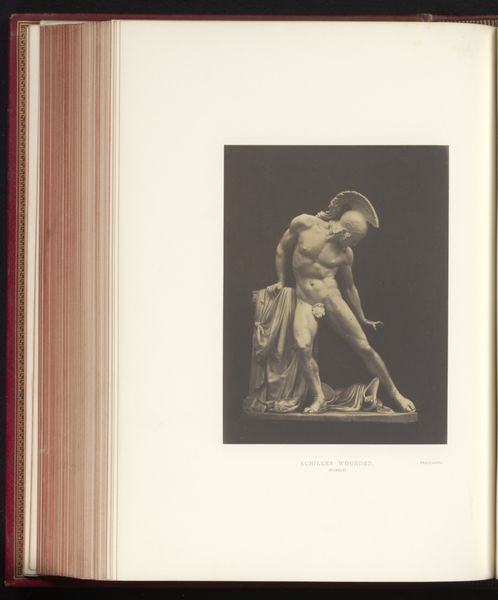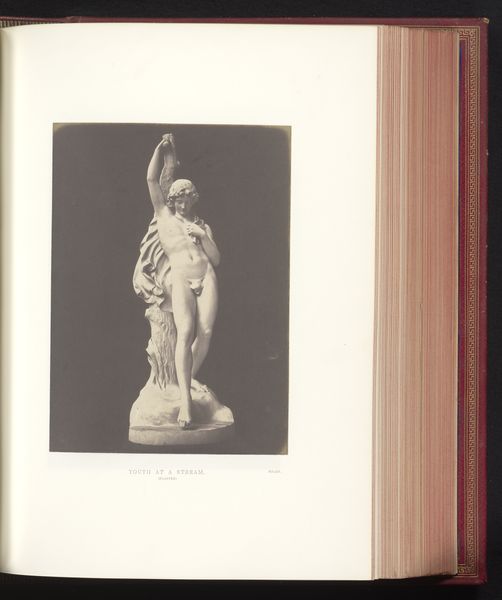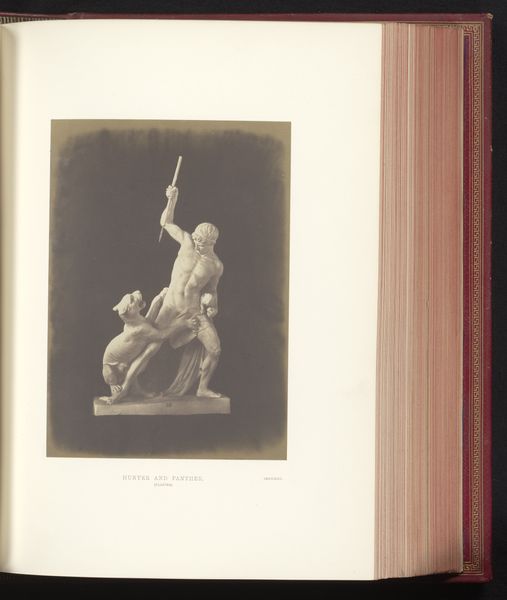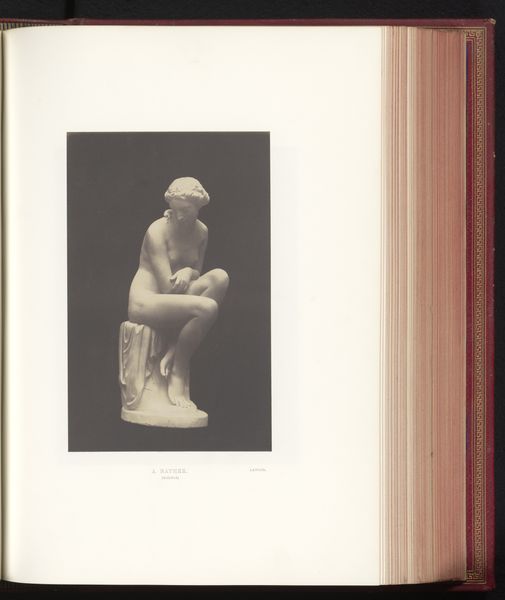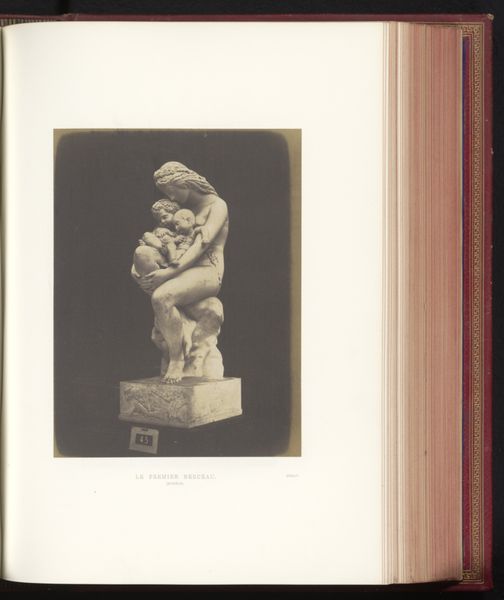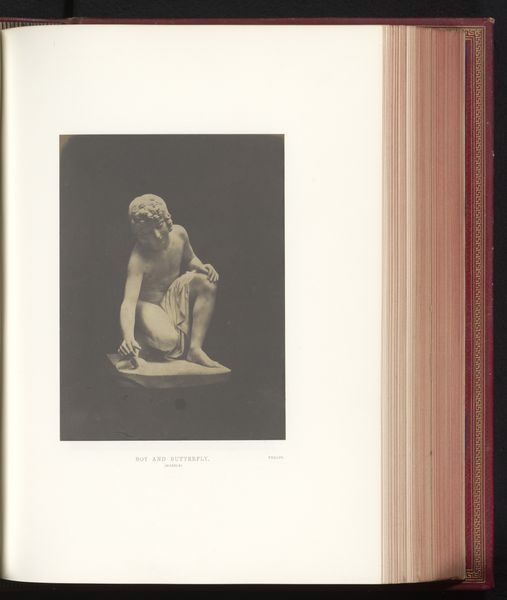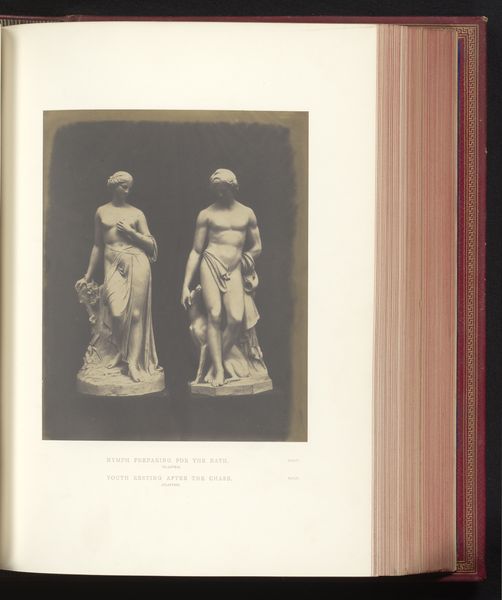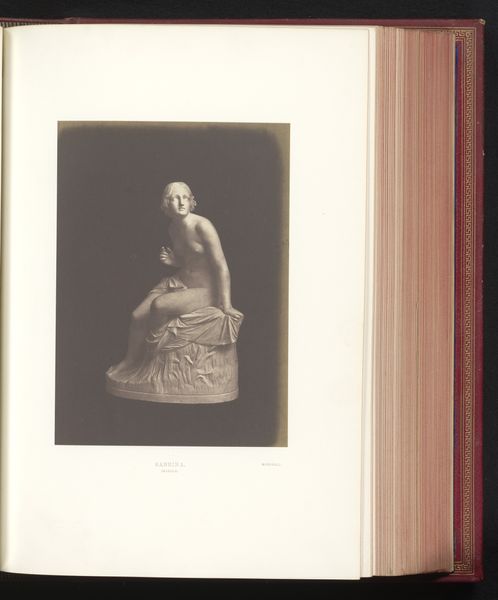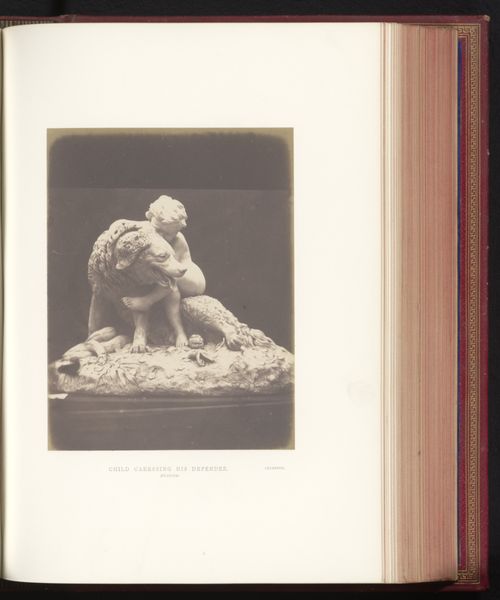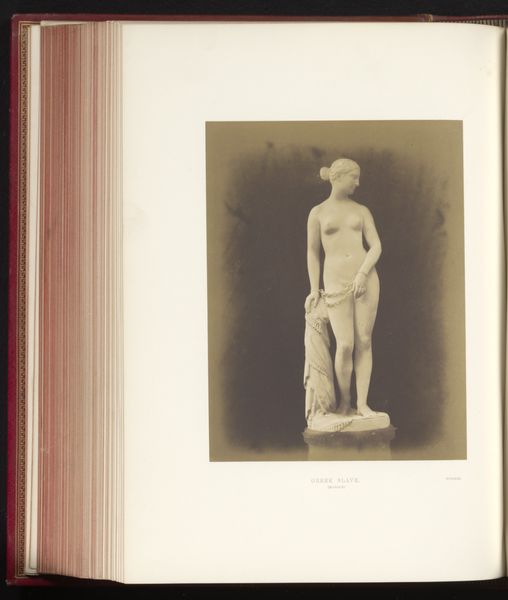
Sculptuur van David door Innocenzo Fraccaroli, tentoongesteld op de Great Exhibition of the Works of Industry of All Nations van 1851 in Londen 1851
0:00
0:00
daguerreotype, photography, sculpture
#
daguerreotype
#
photography
#
classicism
#
sculpture
#
history-painting
#
academic-art
Dimensions: height 199 mm, width 140 mm
Copyright: Rijks Museum: Open Domain
Curator: Well, look at this striking image. This daguerreotype captures Innocenzo Fraccaroli’s sculpture of David, which was exhibited at the Great Exhibition in London, 1851. Editor: He's tense, isn’t he? Not relaxed, almost caught mid-stride. It makes me think he's in between the act of choosing or completing some task, a kind of unresolved moment before or after something decisive. Curator: Fraccaroli certainly captures David at a very specific moment, especially considering the broader legacy of the biblical David, in artistic representation. What is striking is this photograph's ability to convey the texture and form of the marble – how rare to have this preserved through early photography. Editor: Seeing it in this form is quite telling—how even photographs can be turned into icons or objects of fascination, where the content becomes less about the subject matter and more about what's contained within that initial symbolic gesture that inspired that action. A portrait that is more concerned with making you feel like you are David, not looking at him. Curator: I completely agree. The icon of David embodies courage, faith, and, yes, a certain degree of divinely ordained destiny, but the daguerrotype gives it almost an ephemeral weight, since they're all lost. But also in art like this is where a sculpture becomes a memento of something seen and lost. Editor: What truly stays with me is the almost mournful lighting of this image. How even the act of displaying this image creates and reinforces a deep-seated understanding of seeing your reflection, as a man of action. This really becomes a marker of change that remains etched into one's consciousness. Curator: Yes, well put, this single daguerreotype allows us a modern perspective, connecting us across time not only to a moment in art history but a moment of cultural ambition and pride displayed by the Great Exhibition. Editor: Absolutely. What seems simple hides much larger themes: identity, aspiration, loss – they're all interwoven, giving it depth. It's a bit eerie and enchanting.
Comments
No comments
Be the first to comment and join the conversation on the ultimate creative platform.
